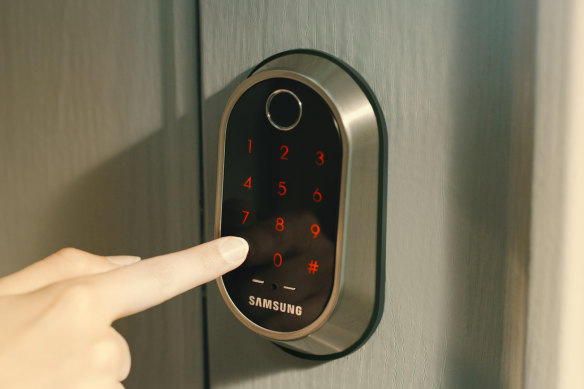The devices you probably think of when it comes to smart homes — like lights, locks, blinds, speakers and thermostats — are similar to their non-smart counterparts, except they have a computerised element with connectivity. Take that away, either because of an internet outage or a more specific service problem, and they still work; they just might not be as smart.
Loading
Smart lights can still be switched on at the wall, smart locks can still be opened with keys or a number pad, and smart blinds can still be operated with chains or buttons. Some smart cameras will keep recording or monitoring, and most smart doorbells will still make a noise. Local network features like scheduling may still work depending on your setup, but anything requiring the internet will stop.
The more realistic danger isn’t that a service outage could lock us in our homes or hold our food hostage in our fridge. It’s that we could become so used to a smoothly operating smart home that we’re unfamiliar with the alternative when it’s taken away by an inevitable outage, however briefly.
In the same way many people would have a hard time navigating to a new place if there was a Google Maps issue, their domestic routines and habits could be severely interrupted should their home’s connection go down.
Given the diversity of smart home setups and individual devices, there’s not really an analogue to enterprise Windows PCs, in terms of envisioning a CrowdStrike style outage of smart homes. But a Google Cloud issue could certainly tank remote access to some entire smart homes, like it did in 2019. An Amazon cloud outage could have similar effect on some homes.
Individual homes could also be affected if they rely solely on a single hub or technology for their smart home needs. In 2021, US company Insteon went out of business after selling millions of high-end hubs designed to be installed in homes and hard-wired to all kinds of connected gear, and when it turned off its servers most of the homes’ functionality turned off too. Smart home tech is trending towards a less centralised approach using open standards, but anything relying on power and the internet will be vulnerable to some form of outage.

Smart locks let you secure your door over Wi-Fi, but they also have physical backup methods.
Other smart home threats
If there’s one thing to take away from CrowdStrike outage, it’s that even the unlikeliest edge case issues do eventually crop up and can have serious impacts. Smart homes, by definition, take some very sensitive elements of our life and expose them to the internet. And while they’re generally safe, you have to be aware of some edge case disaster scenarios.
Take smart locks for example, which are at least as secure as traditional locks. Security exists in the encryption that the service uses to communicate between the lock and your smartphone, as well as the encryption on your home Wi-Fi, meaning hackers can’t easily access the mechanism.
The same is true for security cameras and doorbells as well; between the protocols these devices use and those in your home router, they’re generally very difficult to exploit.
Loading
But breaches have occurred in the past where manufacturers of smart home products haven’t made their products as secure as they should have, such as baby monitors that turned out to be accessible through the public internet, allowing outsiders to view video streams or even speak through the devices.
Smart home gear is generally resilient to so-called zero day flaws – security holes that criminals find and exploit before the manufacturers are aware of them – because of the security in your home network. So while it’s possible for poorly-designed equipment to be exposed, it’s very unlikely that criminals can use that to access other connected devices in a home.
Yet, all smart homes rely on internet routers and hubs to maintain their smarts, and those devices need to be updated frequently to keep them secure and efficient.
I’ve never heard of a dodgy update creating a widespread issue with crashed routers. But then, before last week, I’d never heard of a mass crash of enterprise Windows PCs either. If it does happen, just know your fridge will still open.
Get news and reviews on technology, gadgets and gaming in our Technology newsletter every Friday. Sign up here.





